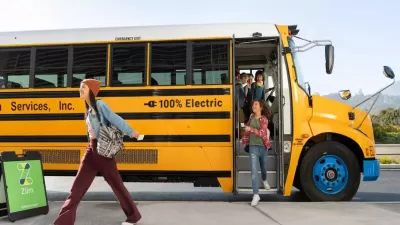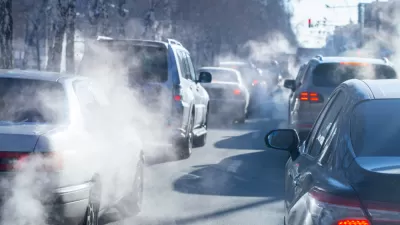A new study from University of Michigan researchers tallies, and then compares, the greenhouse gas emissions from different sectors of the U.S. economy.

"Transportation isn’t the only sector that contributes to greenhouse gas emissions in our world, but it’s a big chunk, and it’s portion is growing," according to an article by Charlie Sorrel.
Sorrel is sharing new research by Michael Sivak and Brandon Schoettle, from the University of Michigan, charted emissions across sectors of the U.S. economy since 1990, finding that industry continues to decrease its emissions while transportation continues to increase its emissions.
"Despite a growth in GDP in the U.S. over the same period, industrial emissions decreased by 11% in the quarter-century covered by the study," explains Sorrel. Compare that to transportation, where medium to big trucks are responsible for most of that sectors increasing emissions. "Sivak and Schoettle’s study shows that relative emissions from medium-to-large trucks have almost doubled since 1990, from 3.6% to 6.0%" Sorrel credits that rise in part to delivery services like Amazon. That fact is particularly relevant to planners as they will continue to confront the effects of expanding delivery services in cities and communities around the world.
The article includes more details about the findings of the study, and what they mean for the impact of the economy on the environment.
FULL STORY: Transportation Is Now The Fastest-Growing Cause Of Greenhouse Gas Emissions

Trump Administration Could Effectively End Housing Voucher Program
Federal officials are eyeing major cuts to the Section 8 program that helps millions of low-income households pay rent.

Planetizen Federal Action Tracker
A weekly monitor of how Trump’s orders and actions are impacting planners and planning in America.

Ken Jennings Launches Transit Web Series
The Jeopardy champ wants you to ride public transit.

Rebuilding Smarter: How LA County Is Guiding Fire-Ravaged Communities Toward Resilience
Los Angeles County is leading a coordinated effort to help fire-impacted communities rebuild with resilience by providing recovery resources, promoting fire-wise design, and aligning reconstruction with broader sustainability and climate goals.

When Borders Blur: Regional Collaboration in Action
As regional challenges outgrow city boundaries, “When Borders Blur” explores how cross-jurisdictional collaboration can drive smarter, more resilient urban planning, sharing real-world lessons from thriving partnerships across North America.

Philadelphia Is Expanding its Network of Roundabouts
Roundabouts are widely shown to decrease traffic speed, reduce congestion, and improve efficiency.
Urban Design for Planners 1: Software Tools
This six-course series explores essential urban design concepts using open source software and equips planners with the tools they need to participate fully in the urban design process.
Planning for Universal Design
Learn the tools for implementing Universal Design in planning regulations.
Ada County Highway District
Clanton & Associates, Inc.
Jessamine County Fiscal Court
Institute for Housing and Urban Development Studies (IHS)
City of Grandview
Harvard GSD Executive Education
Toledo-Lucas County Plan Commissions
Salt Lake City
NYU Wagner Graduate School of Public Service





























